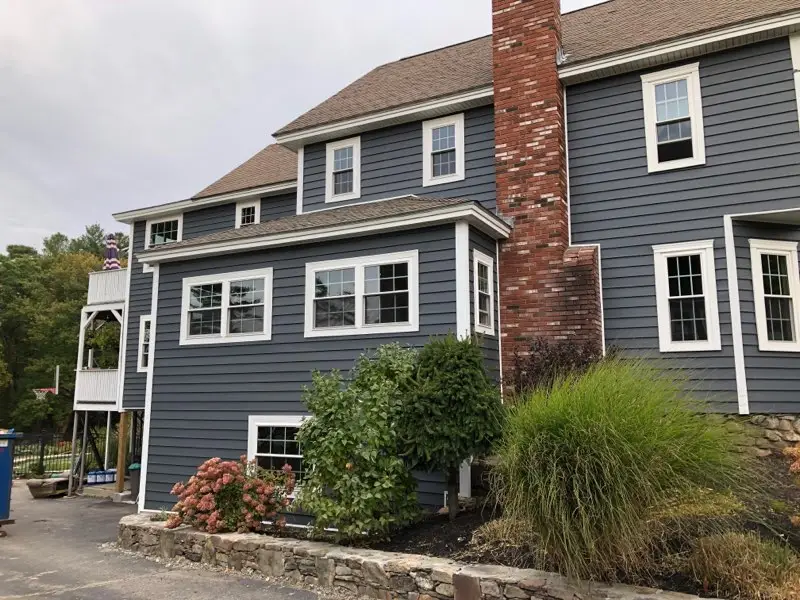It’s officially the holiday season here in New England, and soon snowfall will be on its way. To maximize energy savings, it’s smart to stay a step ahead of the snowfall and begin winterizing your home sooner rather than later. Let’s not forget that we are also entering the Season of Shivers and a very cold and snowy winter season predicted by the Farmer’s Almanac.
Furthermore, National Grid is increasing their electricity rates by 50% while the price of natural gas is skyrocketing.
winterizing your home

It’s more important now than ever to take steps on winterizing your home. Winterizing your home can help prevent heat loss while keeping your home comfortable. These are the top tips for keeping your home safe and warm this holiday season:
Get Your Windows Ready For Winter
Window Replacement During Winter
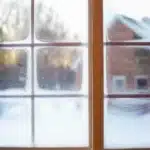 Roughly 30% of energy escapes from outdated windows. While noting that winterizing doesn’t provide the full benefits of total window replacement, you can help keep off the chill by applying new weatherstripping, sealing with new caulk, and applying window film.
Roughly 30% of energy escapes from outdated windows. While noting that winterizing doesn’t provide the full benefits of total window replacement, you can help keep off the chill by applying new weatherstripping, sealing with new caulk, and applying window film.
If you are looking to get significant energy savings, there is no replacement for new energy-efficient windows in Massachusetts. Look for the following qualities with new windows for best results:
- Low-e glazing that allows the sunlight to naturally heat the home during the wintertime. It’s built-in engineering for keeping energy bills low and your home warm.
- Insulated gases argon and krypton improve the thermal efficiency during the winter. The gases keep convection low to reduce energy loss through the glass panes.
- Triple pane windows enhance energy savings due to their second glass chamber, allowing extra space for insulating gases.
- Professional window installation along with the use of quality weatherstripping creates an airtight seal with new windows.
Invest in windows that are certified by Energy Star with an air infiltration rating at 0.3CFM—which means that the lowest amount of energy possible is able to escape through the windows.
Should You Winterize or Replace Your Windows?
new window installation
- Do they have any seal failures (fogged glass)? This is a sure sign that the gasket has failed and your money is literally going out the window. There is nothing separating you from the outside here. You may as well have the window open!
- Do you have windows with single-pane glass? Double pane windows provide by far a greater amount of insulation from the outside as they contain two panes of glass with a sealed barrier of air between them thus keeping cold air out and warm air in. Therefore they are much more efficient in terms of energy saving.
- If you have old inefficient storm aluminum windows, especially 30 years old or more, new replacement windows will save you money in the long run.
Winter Ready Sale!
Winterizing Your Exterior Siding
You can lose up to 25% of your home’s heating through the inefficient home siding. Make sure you repair or replace old wood siding, especially if it’s rotting. This siding is no longer insulating your home.
vinyl siding replacement
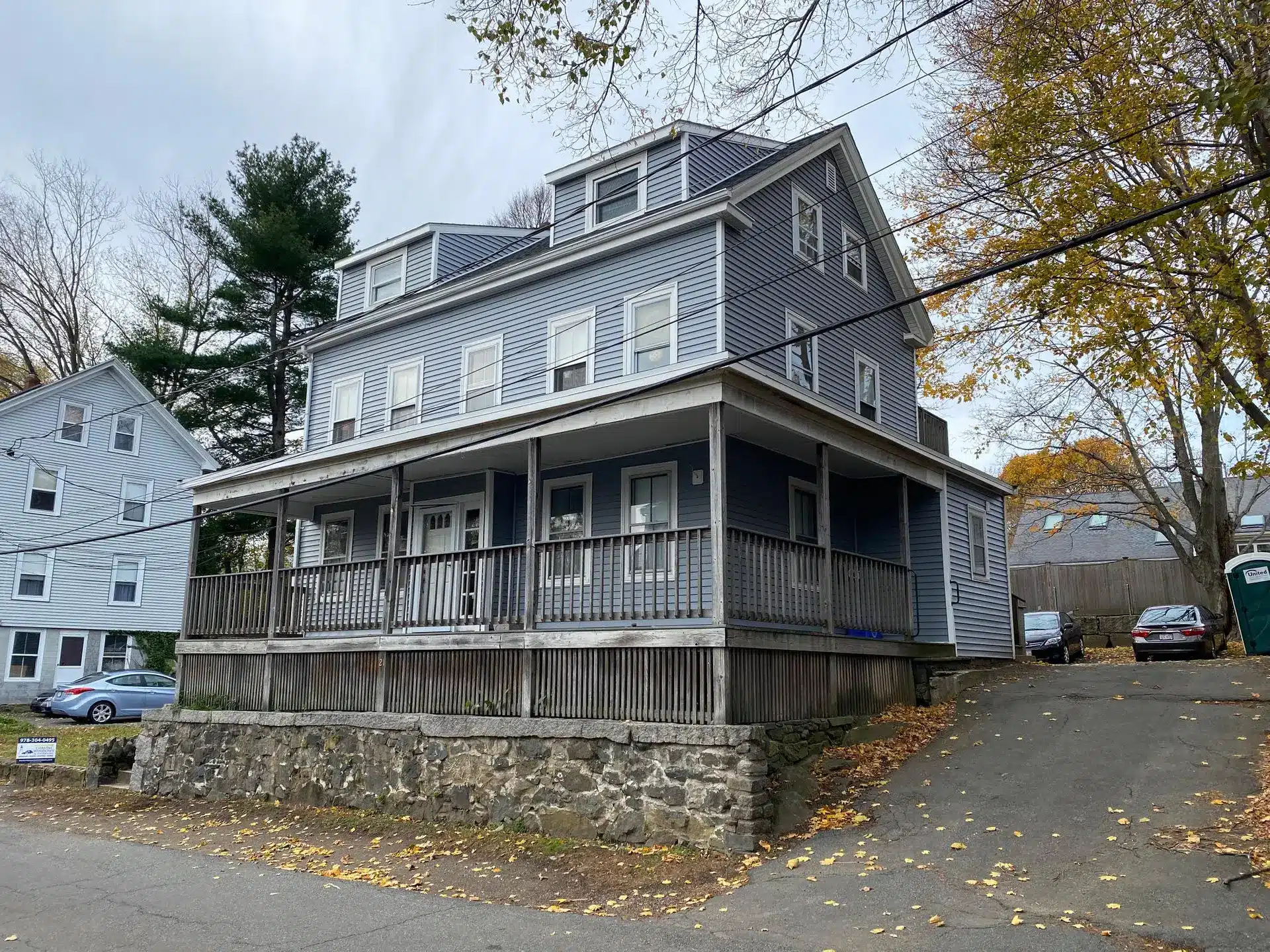
With vinyl siding installation, you can save more energy dollars and properly winterize your home with the following advice:
- Invest in good-quality vinyl if you’re serious about protecting your home during cold weather. Poor quality vinyl can crack in extremely cold temperatures.
- Upgrade to insulated vinyl siding panels. With thick insulation behind the paneling, it reduces energy bills inside the home. The siding provides an extra barrier to prevent heat from escaping while blocking out cold temperatures, freezing rain, and snow. Additional benefits of foam insulated vinyl siding include increased impact resistance and sound reduction.
- Look for vinyl siding panels with high R-values, up to 5. A high R-value signifies that the siding can block heat loss through the exterior and wood studs.
Should You Winterize or Replace Your Exterior Cladding?
Are you on the fence about making repairs to your siding or investing in total replacement? In some cases, siding repair serves as a Band-Aid approach without the full benefits of winterizing your home. If your siding is experiencing any of the following, the best course of action is to consider replacement:
- Do you have loose siding panels that expose the exterior to the elements? This makes your home subject to moisture damage during the winter which can ultimately cause the exterior to break down.
- Does your siding have signs of wood rot? If you notice soft spots in your wood or even signs of terminating infestations, you’ll want to consider a new vinyl siding replacement sooner rather than later.
- Are you constantly painting your wood siding? Untreated wood siding is subject the moisture damage which can begin with peeling paint.
- Are your utility bills spiking? Insulated vinyl siding provides helps block heat transfer while keeping heat inside your home where it belongs.
Weatherproofing Your Entry Door
In a climate like New England’s, you need a door that withstands the weather and does not rot from moisture damage, resulting in significant energy loss. To weatherproof your door, try adding new weatherstripping and making sure the door is correctly aligned within the frame. However, new door installation can help to further winterize the home:
winterize your entry door
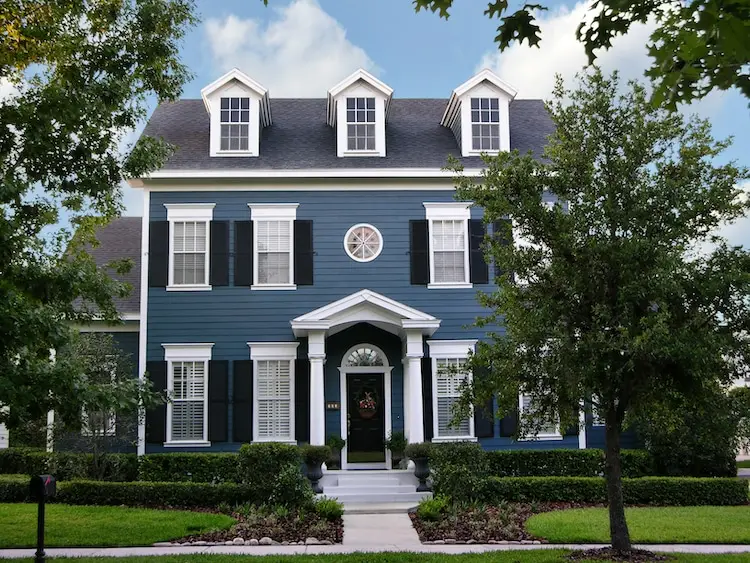
- Fiberglass doors defend against the New England climate. With reinforced skin, these doors won’t break down from exposure to ice, sleet, or snow.
- Choose fiberglass doors with an internal polyurethane foam core. Polyurethane foam cores have some of the highest R-Values available for residential doors in MA. The foam is strong yet lightweight and moisture resistant, performing as an excellent weather barrier and insulator.
- Opt for professional door installation. An expert installer ensures that the door is plumb within the frame and reduces heat loss in the winter.
Should You Winterize or Replace Your Entry Door?
- Is your entry door sticking within the frame? Wood doors expand and contract due to varying humidity levels. Wood gains about 1% moisture for every 5% change in relative humidity.
- Is your door drafty? Drafty doors are a serious sign that replacement is in order. Drafts can come through the frame of the door as well as the threshold. Weatherstripping can help, but this is a temporary approach.
- Is your door leaking moisture? This can happen in any season. If moisture such as rainwater is coming through the door, this means the door is also drafty.
If your entry door is excessively sticking, it’s time to think about replacing it. This is an indicator that the door is aging or is possibly not fitting correctly within the frame.
Weatherproof Your Roof
Roofing results in significant energy savings during the winter. You can winterize your current roof by replacing missing shingles and repairing leaks, especially around the chimney flashing where they are quite common.
weatherproofing your roof
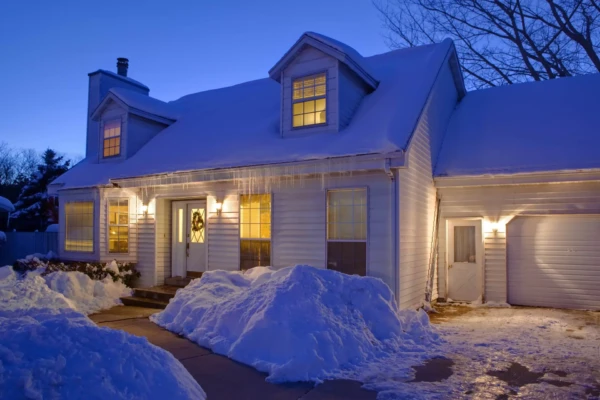
New roof installation can help save energy during the winter in the following ways:
- Adequate ventilation allows air to circulate through the attic space. This prevents the roof from getting too warm and melting snow into the gutter system, resulting in ice dams.
- 6’ of leak barrier protection, which protects vulnerable areas of the roof. Without it, moisture can make its way inside and damage the roof deck and rafter beams.
- Quality asphalt shingles that can withstand blustery winter winds. This keeps the shingles intact and prevents exposing the roof to snow, sleet, and ice.
- Professional roofing installation and a quality roofing system, bringing better energy savings through protection against the elements while preventing heat loss.
You’ll also not want to forget about weatherstripping the attic door, which can help prevent air leaks. A 1/4-inch gap around pull-down attic stairs lets through the same amount of air as a bedroom’s heating duct. You can weatherstrip the attic door with the following steps:
- Apply self-adhesive weatherstripping foam around the perimeter of the hatch opening. Please make sure you take these precautions when working in the attic
- Wear protective gear such as disposable gloves and a double-elastic respirator.
- One warning: If you find vermiculite (looks like an old newspaper) insulation, hold off until you’ve had it checked for asbestos and/or contact your local building department.
shingles on a damaged roof
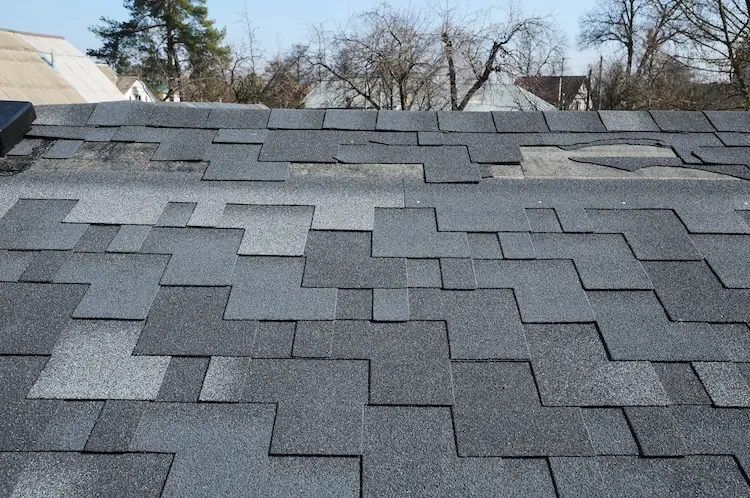 A close up view of shingles a roof damage.
A close up view of shingles a roof damage.
Should You Winterize or Replace Your Roof?
Replacing some missing shingles can help your roof’s performance, but only to an extent. You’re better off replacing your roof than winterizing it if you experience:
- Did you experience ice dams last winter? This is a sign that the attic temperature in your home is unbalanced and too warm in the winter, causing snow to melt off the roof and lead to ice dams.
- Is your attic leaking? Finding condensation in the attic or personal belongings that are wet is a serious sign that replacement is a priority.
- Do you have to miss, curled, or buckled shingles? This exposes the roof deck to the elements, subjecting the roof to moisture damage and wood rot.
Winter Ready Sale!
Beyond Upgrading The Elements of Your Exterior
These are a few other quick winterizing tips for your home:
- Get Rid of Leaves on Your Housetop. Take a day during the weekend to clear leaves from your roof and gutters—this is essential to preventing ice dams, which can cause considerable damage to your roof and gutters.
- Invest in a Smart Thermostat. Use a programmable thermostat to lower the temperature when you’re not home.
- Check Your Fireplace. Keep fireplace dampers are closed when they’re not in use, which can help prevent energy from escaping your home.
- Remove Window Air Conditioning Units. Leaving your unit exposed to sleet, rain, and snow can impact the indoor temperature of your home due to the gaps that allow warm air to escape.
Additional winterizing tasks you can do for maximized results include:
Insulate Around Recessed Lights: Recessed lights have vents that open up into the attic which is a direct route for heated/cooled air to escape. They are one of the leading causes of household air leaks. This is an easy fix.
Here is what you need to do:
- Remove the bulb and next to the bulb check to see if it is labeled IC-AT (Insulation Contact Air Tight)
- If it is not, you can assume your leaks.
- Purchase new airtight baffles for around $20 each.
- Remove the bulbs, push the new airtight baffles up into the housing, and then replace the bulb
Caulk Skinny Gaps: Caulk makes the best gap-filler for openings less than 1/4-inch wide. Check around your house and caulk up all-around your electrical boxes. Silicone caulk works best next to nonporous materials, such as metal flashing, or where there are temperature extremes. Although, acrylic latex caulk is less messy to work with and cleans up with water.
Also, Insulate Electrical Boxes since your outlets can actually leak heat from your home take the time to take on this simple project. It’s going to make the biggest difference on the exterior walls of your home. They even have a product out there called Socket Sealers which includes all you need.
Think about this…$5 Savings/per month = $60/Savings per year. For some people, that’s almost one month free!
- Unscrew the plate and put a piece of insulation over the outlets
- Screw the plate back on and add those baby plug protectors.
Plug Gaps in the Basement: In most older homes, air seeps in when the house sits on a foundation. Those gaps that are above the outside soil level let air in so is important to seal those with caulk for gaps up to ¼” wide around and spray foam for wider ones. Please make sure you use a high-temperature caulk around vent pipes that get hot and shoot foam around wider holes for pipes that pass through basement walls to the outside.
Ask Us About Weatherproofing Your Home
We hope that these tips will help you prepare for the winter ahead while keeping your energy bills low. We can’t wait to make your home a more beautiful and comfortable place to live!
Contact us to learn more about our current promotions for your exterior home improvement needs.


